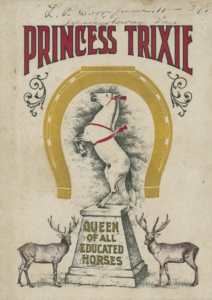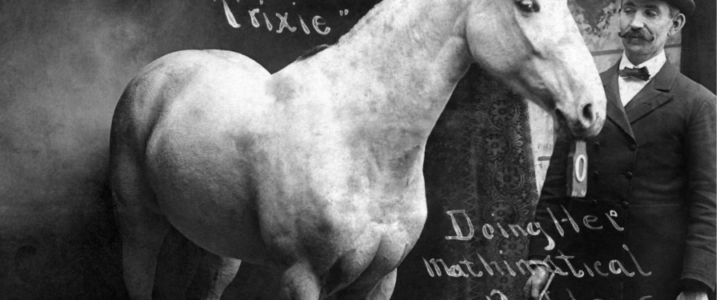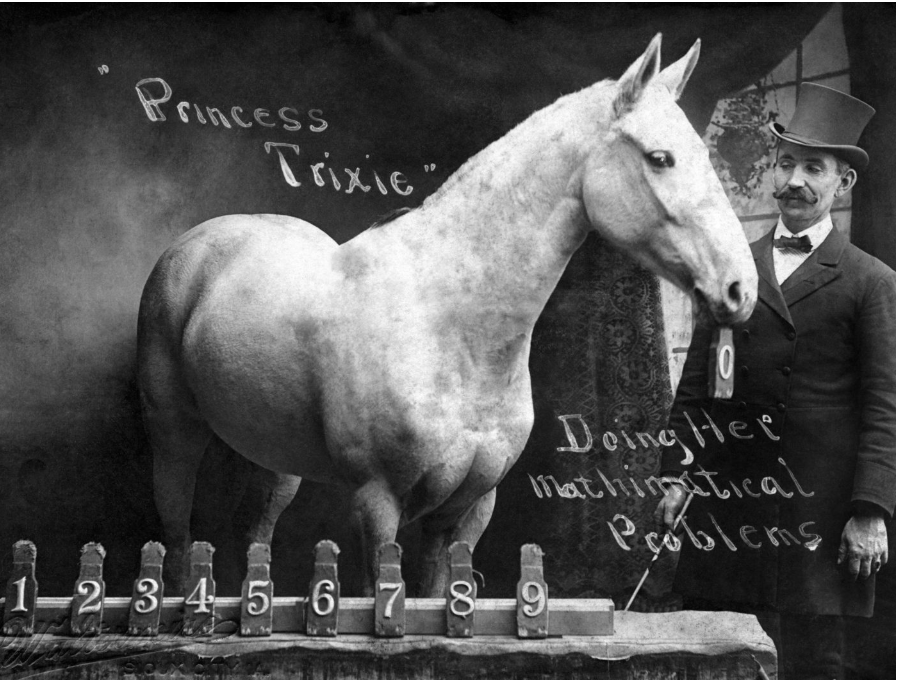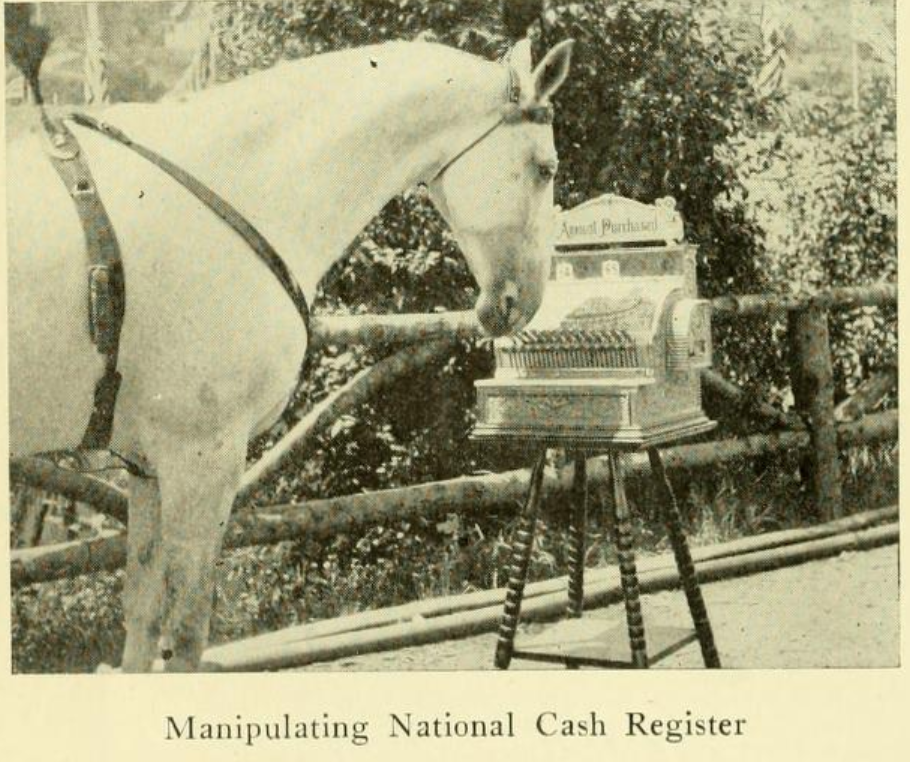Which equine autobiography was first published in Portland, Oregon?

A: Black Beauty (1877)
B: Strider: The Story of a Horse (1886)
C: Princess Trixie (1905)
Answer Princes Trixie: Queen of all Educated Horses Autobiography: an accurate account of the sayings and doings of the wisest and most highly educated horse in the world. Free link to the entire book: Link to Book
The animal autobiography as a genre is problematic. Princess Trixie: Autobiography: an Accurate Account of the Sayings and Doings of the Wisest and Most Highly Educated Horse in the World is an account of a Grey, ½ Arabian mare who worked internationally as vaudeville entertainer.
The first edition of the book was sold to her fans at the 1905 Lewis and Clark Exposition and Oriental Fair. Her initial repertoire of bowing, playing the chimes, and simple math grew along with her talents. Now that she was able to count and multiply she was used to market the cash register for National Cash Register Company by demonstrating making change and keeping accounts in check. She performed alongside the two diving elk in Portland. Trixi was an advocate for the humane treatment of animals and was an honorary member of humane societies. Her death in a train wreck was national news in 1909.



















